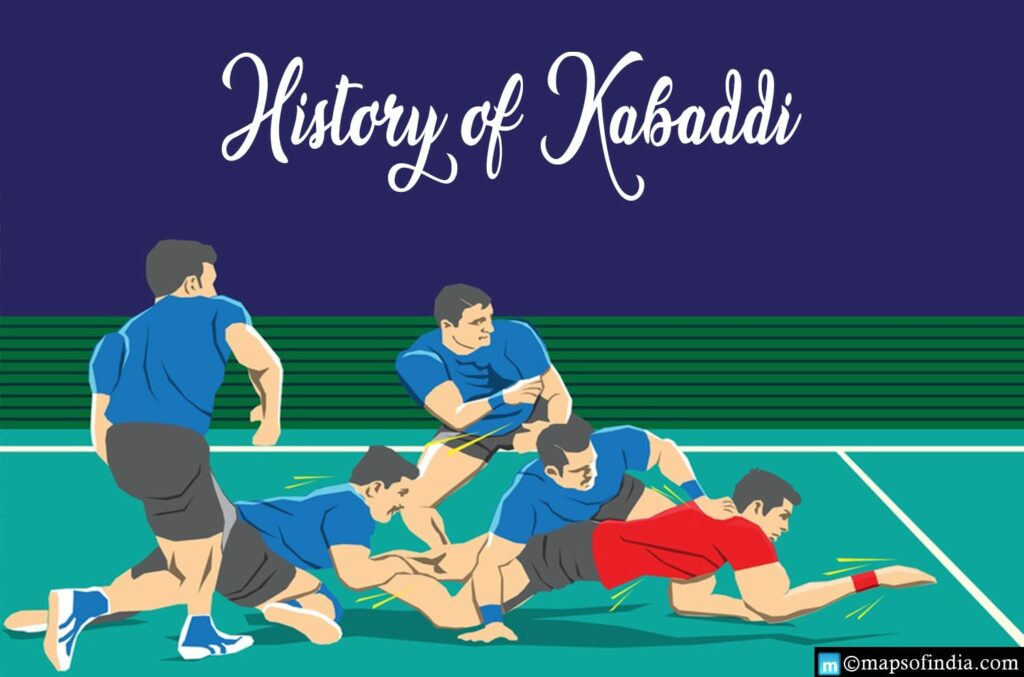Kabaddi is an ancient sport with a history of several thousand years. It originated as a competition between the armies to capture territory and win the enemy’s captives. In modern times, kabaddi is played on a circular field, and its rules have changed over time. A few decades ago, kabaddi was played on a mud surface, and players had to touch their opponents’ feet to win the game. Today, kabaddi is played on mats and is known for its high-octane action and fast-paced play.
The popularity of kabaddi has grown in recent decades. With the advent of kabaddi as an Olympic sport and its inclusion in many pro leagues around the world such as the Pro Kabaddi League (PKL) and Super League, kabaddi has found a new fan following among fans across the globe. In this blog, we will discuss how kabaddi evolved from ancient times to its modern form that we see today as well as how it has gained immense popularity as an international sport that millions follow around the globe every year.
Changes in Kabaddi Rules Over the Years
- Introduction of standardized rules: The first major change in Kabaddi rules came in the early 20th century when the sport was standardized. The All India Kabaddi Federation was formed in 1950, and it introduced a set of rules that were universally accepted across the country. These rules included a 30-second time limit for a raider to complete an attack, a rule that prohibited touching the raider’s hair or clothes, and a provision that awarded a point for escaping from a tackle.
- Introduction of mat-based Kabaddi: In the 1970s, a new version of Kabaddi was introduced, which was played on a mat instead of a field. This version of Kabaddi was faster, safer, and more spectator-friendly. The rules were modified accordingly to suit the new format. The playing area was reduced to a 13m x 10m mat, and the time limit for a raider to complete an attack was reduced to 25 seconds.
- Introduction of bonus points: In the 1980s, bonus points were introduced in Kabaddi. Bonus points were awarded to raiders who crossed the halfway line without being tackled. This rule was designed to make the game more attacking and to encourage raiders to take more risks.
- Introduction of super tackles: Super tackles were introduced in the 1990s to make the game more competitive. A super tackle is when three or more defenders successfully tackle a raider. The defending team is awarded two points, and the raider is declared out.
- Introduction of time-outs: In the 2000s, time-outs were introduced in Kabaddi. Each team is allowed one time-out per half, which can be used to strategize and re-group. This rule was introduced to make the game more tactical and to allow teams to take a breather during intense moments of the game.
- Introduction of video referrals: In recent years, video referrals have been introduced in Kabaddi. Teams are allowed two video referrals per match, which they can use to challenge a decision made by the referee. This rule was introduced to ensure that decisions are fair and to reduce human errors.
The Shift From Mud to Mat Transforms Kabaddi
Kabaddi has undergone several transformations in the last few decades. The sport first made its mark in ancient India and evolved into a full-fledged sport in the 20th century. In 2002, synthetic foam mats were introduced, which transformed kabaddi into an indoor sport as well as making it more body-friendly. This shift allowed kabaddi to become popular among raider teams and made it one of the most popular raid games in the country.
The All India Kabaddi Federation (AIKF) established National Style Kabaddi in 1950 as a standardized set of rules for kabaddi. Since then, the game has been growing steadily and is now played across all ages and genders. It is also gaining popularity globally with many countries adopting variations of the game.

Popularity of Kabaddi Around the World
The popularity of kabaddi can be attributed to its unique gameplay as well as its diverse culture. This team-based game involves 12 member teams on a circular field with point goals at each end. Unlike other sports, kabaddi involves active participation from all parts of the body and requires a lot of stamina and skill. Another reason for its popularity is that it doesn’t require any expensive equipment or training facilities.
A traditional kabaddi court looks similar to an Indian football ground with a circular boundary marked by white lines and a central circle marked with black lines that serves as the playing area.
Another aspect that adds to kabaddi’s popularity is that it is an affordable sport for people across all economic strata, even for those who are not able to afford other modern sports like cricket or football.
Over the years, kabaddi has evolved and gained recognition globally, thanks to the initiatives taken by various international organizations. Today, kabaddi is played in more than 40 countries, including Australia, England, Canada, Iran, and Japan, among others.
One of the most significant events that helped kabaddi gain popularity was the launch of the Pro Kabaddi League (PKL) in India in 2014. The PKL, a professional kabaddi league, brought together some of the best players from around the world, and its success paved the way for other kabaddi leagues in different countries.
- In Iran, kabaddi is a national sport and is played at both amateur and professional levels. Iran has won several gold medals at the Asian Games and the Asian Indoor and Martial Arts Games. Similarly, in Bangladesh, kabaddi is a popular sport, and the country has produced several world-class players.
- In Japan, kabaddi is gaining popularity, and the country has hosted several international tournaments. The Japanese women’s kabaddi team won the bronze medal at the 2018 Asian Games, marking a significant achievement for the sport in the country.
- In Canada, kabaddi has gained popularity among the South Asian community, and several local leagues have been launched in recent years. The country has also hosted several international tournaments, including the 2016 Kabaddi World Cup.
Let’s Sum Up
Kabaddi has come a long way since its inception, and the sport has undergone many changes over the years. The introduction of standardized rules, mat-based Kabaddi, bonus points, super tackles, time-outs, and video referrals have made the game more competitive, safer, and more accessible to players and spectators alike. As Kabaddi continues to grow in popularity, we can expect more changes in the rules that will make the game even better.



